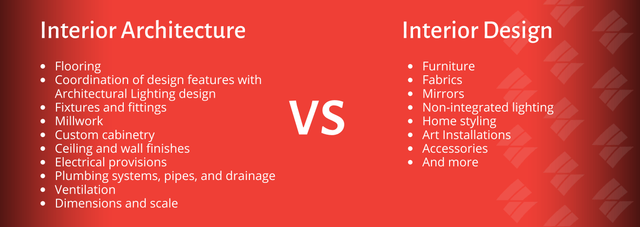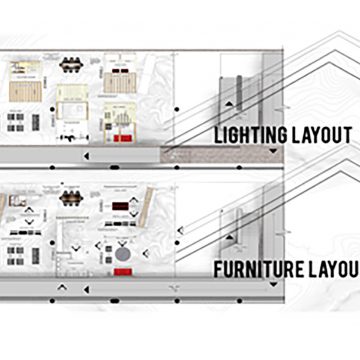The Art of Equilibrium: Exactly How Interior Design and Home Architect Collaborate for Stunning Outcomes
In the world of home layout, striking an equilibrium between aesthetic appeals and functionality is no little task. This fragile equilibrium is attained via the unified collaboration in between interior developers and designers, each bringing their one-of-a-kind expertise to the table. The result? Spaces that are not only visually magnificent but also incredibly habitable. This perfect blend is not always simple to achieve. Keep with us as we check out the ins and outs of this collective procedure and its transformative influence on home style.
Recognizing the Core Distinctions Between Inside Layout and Home Design
While both Interior Design and home design play important functions in producing visually pleasing and functional rooms, they are naturally different self-controls. Home design mostly focuses on the structural aspects of the home, such as developing codes, safety and security laws, and the physical construction of the space. It deals with the 'bones' of the structure, collaborating with spatial dimensions, bearing walls, and roofing styles. On the other hand, Interior Design is more worried with enhancing the aesthetic and sensory experience within that framework. It involves choose and setting up furniture, selecting color pattern, and including decorative components. While they work in tandem, their duties, duties, and locations of proficiency diverge significantly in the production of an unified home setting.
The Synergy Between Home Style and Inside Layout
The synergy in between home design and Interior Design hinges on a shared vision of style and the improvement of useful aesthetic appeals. When these 2 fields align sympathetically, they can change a living space from regular to amazing. This cooperation needs a deeper understanding of each self-control's concepts and the capability to create a natural, aesthetically pleasing setting.
Unifying Design Vision
Merging the vision for home design and interior design can create an unified living space that is both practical and cosmetically pleasing. It promotes a collaborating approach where architectural elements complement indoor layout components and vice versa. Thus, unifying the style vision is vital in mixing architecture and interior style for stunning outcomes.
Enhancing Useful Aesthetic Appeals
How does the harmony between home architecture and Interior Design enhance useful appearances? This harmony makes it possible for the development of areas that are not only visually attractive however likewise easily useful. Architects lay the foundation with their structural layout, making certain that the area is sensible and effective. The interior designer then matches this with carefully picked aspects that enhance the looks without compromising the functionality. This harmonious cooperation can result in homes that are both liveable and stunning. A designer might develop a house with high ceilings and large windows. The indoor designer can after that highlight these functions with high plants and large drapes, respectively, thus boosting the visual appeal while keeping the functional advantages of all-natural light and space.
Significance of Collaboration in Creating Balanced Spaces
The cooperation between indoor designers and engineers is pivotal in creating balanced rooms. It brings harmony in between design and architecture, offering birth to areas that are not just aesthetically pleasing yet also useful. Discovering successful joint methods can supply insights into how this synergy can be effectively achieved.
Harmonizing Design and Design
Equilibrium, a vital element of both Interior Design and design, can only really be attained when these two areas operate in consistency. This consistency is not merely an aesthetic consideration; it affects the performance, durability, and ultimately, the livability of a room. Interior designers and designers have to comprehend each other's duties, value their competence, and communicate effectively. They have to consider the interplay of architectural components with decor, the flow of rooms, and the effect of light and shade. This joint procedure results in a cohesive, balanced design where every element adds and has a function to the general visual. Harmonizing layout and architecture is not just concerning creating attractive spaces, yet regarding crafting rooms that function perfectly for their residents.
Successful Collaborative Techniques

Instance Studies: Effective Assimilation of Design and Architecture
Taking a look at numerous study, it emerges exactly how the successful combination of Interior Design and architecture can transform a space. The Glass Home in Connecticut, renowned for its minimalistic sophistication, is one such example. Architect Philip Johnson and interior developer Mies van der Rohe collaborated to create a harmonious balance between the interior and the framework, resulting in a wikipedia reference smooth circulation from the outside landscape to the internal living quarters. One more exemplar is the Fallingwater House in Pennsylvania. Architect Frank Lloyd Wright and interior developer Edgar Kaufmann Jr.'s collective initiatives bring about a stunningly unique house that mixes with its all-natural environments. These study underline the profound impact of an effective layout and design partnership.

Conquering Challenges in Style and Design Collaboration
Despite the indisputable advantages of an effective collaboration between interior layout and style, it is not without its difficulties. Engineers might prioritize structural stability and security, while designers focus on comfort and style. Efficient interaction, mutual understanding, and concession are crucial to overcome these obstacles and achieve a successful and harmonious cooperation.

Future Patterns: The Advancing Relationship Between Home Architects and Interior Designers
As the globe of home layout proceeds to evolve, so does the connection in between designers and interior designers. The fad leans in the direction of a more incorporated and collective strategy, breaking without traditional roles. Engineers are no more solely focused on architectural honesty, but likewise involve in enhancing visual allure - Winchester architect. Alternatively, indoor developers are accepting technical facets, influencing overall design and capability. This evolving symbiosis is driven by developments in innovation and the expanding need for spaces that are not only aesthetically pleasing yet sustainable and additionally functional. The future guarantees a more natural, ingenious, and flexible technique to home layout, as designers and engineers proceed to blur the lines, fostering a connection that genuinely embodies the art of equilibrium.
Verdict
The art of equilibrium in home style is attained through the unified partnership in between indoor designers and designers. An understanding of each various other's disciplines, efficient communication, and shared vision are important in developing visually magnificent, functional, and inviting rooms. Despite obstacles, this collaboration fosters growth and technology in style. As the connection between home engineers and indoor designers develops, it will certainly remain to form future patterns, enhancing convenience, effectiveness, and personal expression in our space.
While both interior design and home architecture play necessary roles in creating visually pleasing and useful rooms, they are inherently various disciplines.The harmony in between home architecture and indoor layout lies in see this here a shared vision of layout and the enhancement of useful visual appeals.Merging the vision for home architecture and indoor layout can develop a harmonious living area that is both practical and visually pleasing. Thus, unifying the design company website vision is vital in mixing design and indoor design for spectacular results.
Exactly how does the synergy in between home architecture and indoor design enhance useful visual appeals? (Winchester architect)